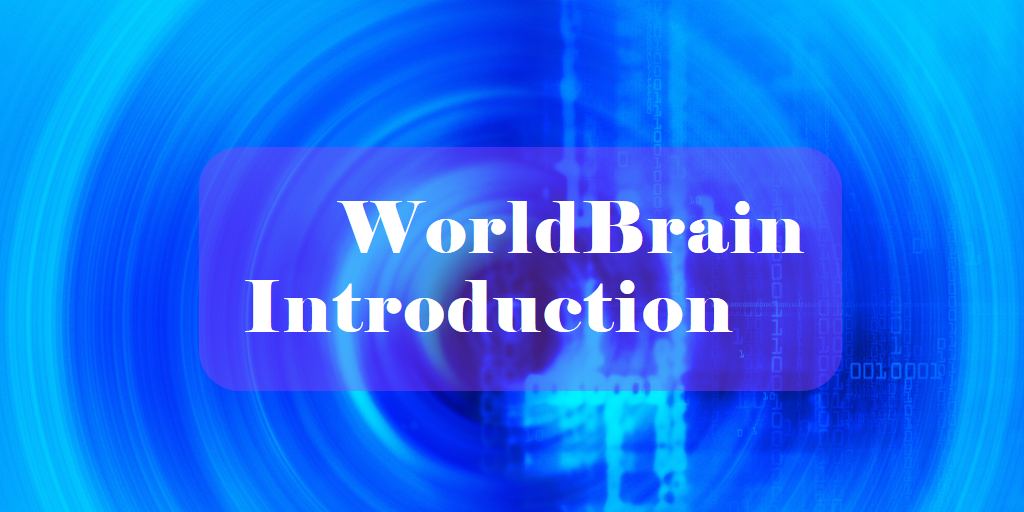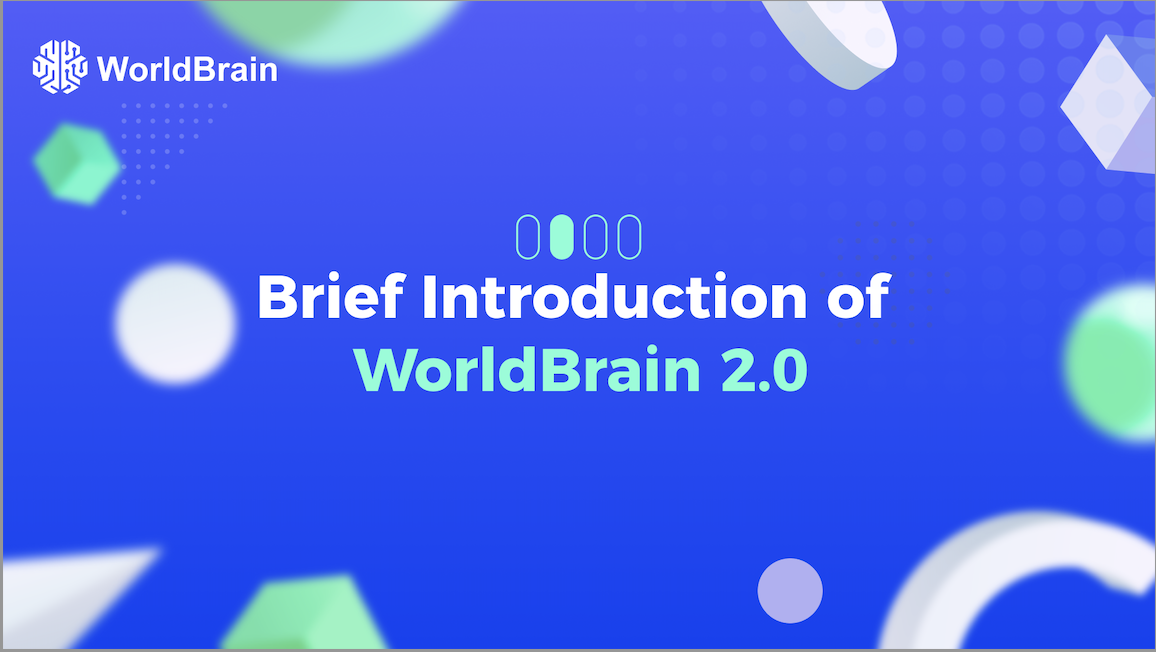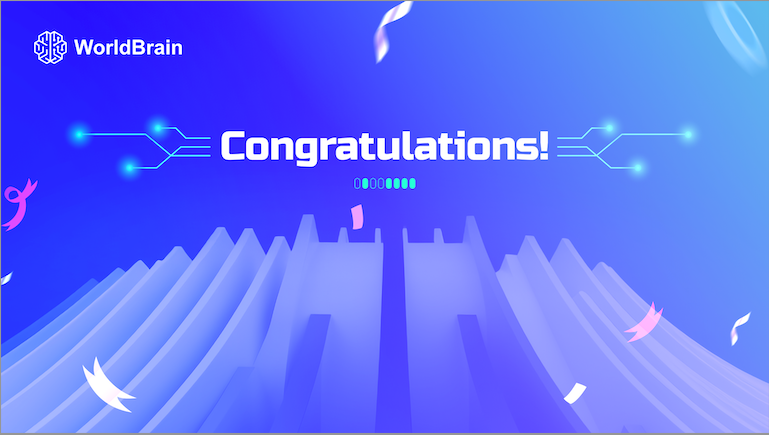
Published on
01/31/2024WorldBrain is an innovative project initiated by the Worldbrains Foundation, a subsidiary of OpenAI. Unlike ChatGPT’s LLM, it adopts the World Model framework. Based on the World Model, it combines artificial intelligence, neuroscience, and blockchain technology through Web3 to develop a comprehensive, decentralized artificial intelligence system.
WorldBrain leverages distributed computing technology, deploying hardware devices globally through the DePIN network. This enables people from all corners of the Earth to participate in the emergence of true artificial intelligence. The resulting artificial intelligence will serve the entire human population. Additionally,Tokenization will distribute the wealth created by WorldBrain, capable of ensuring human prosperity, effectively among all participants. This ensures that the general artificial intelligence represented by WorldBrain benefits all ordinary people.
Before delving into the specifics of WorldBrain, let's first understand the World Model and its background.
The concept of a World Model is not new, which was proposed as early as the 1960s and has found widespread applications in computer science, cognitive science, psychology, and other fields.
In 1963, renowned computer scientist John McCarthy introduced a logic-based World Model called Situation Calculus, used to describe and reason about dynamically changing environments.
In 1968, prominent psychologist George Miller proposed a memory-based World Model called TOTE (Test-Operate-Test-Exit) to describe and guide human behavior.
In 2016, Jeff Hawkins, a member of the National Academy of Engineering, computer scientist, and neuroscientist, completed the roadmap for implementing strong artificial intelligence based on the World Model.
In 2018, Google Brain and the Swiss AI Lab, in collaboration with Jeff Hawkins, established the WorldModel code open-source platform (worldmodels.github.io) based on A NEW THEORY OF INTELLIGENCE.
In 2022, Turing Award winner Yann LeCun, in his paper "A Path Towards Autonomous Machine Intelligence" modeled general artificial intelligence from brain modeling to world modeling. He outlined an end-to-end network that completes basic algorithms end-to-end. LeCun believes that to make AI approach human levels, it needs to learn how the world operates like a baby. Thus, he introduced the concept of the "World Model".
What is World Model?
World Model refers to a simulation and representation of the real world constructed by computers or artificial intelligence systems. It is a comprehensive method for describing and predicting the environment, achieving accurate abstraction and simulation of elements such as objects, scenes, and actions through the processing of perceptual information and data modeling. It helps AI systems understand, learn, and control events occurring in the environment. The WorldModel can be considered the "mind model" of AI systems, reflecting their perception and expectations of both themselves and the external world.
The primary purpose of the WorldModel is to design a neural network module capable of updating states, used for memorizing and modeling the environment. It achieves this by taking current observations (images, states, etc.) and upcoming actions, updating the model's memory and understanding of the world, predicting the next possible observations (images, states) and actions. After taking actions, the difference between actual observations and predicted observations serves as self-supervision for optimizing the training model. The WorldModel is one of the crucial technologies for achieving AGI.
Why does WorldBrain choose to adopt the World Model?
First, let's explore OpenAI's first AI product, ChatGPT. ChatGPT is a language model for conversation generation built on OpenAI's GPT model, a deep learning natural language processing model that generates high-quality natural language text through extensive pre-training and fine-tuning.
ChatGPT is a powerful conversational generation model capable of generating and interacting in natural language conversations. However, it requires appropriate validation and management based on specific scenarios and needs during usage, representing an intermediate product in the technological iteration.
Current deep learning models face limitations:
- Lack of long-term persistent memory, capable only of processing current frames or a few frames of data, unable to effectively retain long-term and persistent memory across visual models, speech models, and large language models.
- In the development of physical robots, models like LLMS are not suitable.GPT-4, used for robot navigation, planning, and control, and models like RT-1 and RT-2 for robot large-scale designs, show that the current language-centric large model design is not suitable for robots that need to interact with the real world.Language models merely provide textual descriptions without direct observation and perception of the world, lacking the ability to perceive, understand, predict, and respond to the external world like humans.
WorldBrain adopts the World Model, a large-scale intelligent neural network system that mimics the modeling of the human brain. We are capable of perceiving and understanding various information and features of the external world. Based on these perceptual inputs, the human brain constructs a mental model that includes abstractions and generalizations of the structure, attributes, behaviors, and patterns of the world.
The human mental model is dynamic, continually updating with accumulated experiences and learning. It enables us to predict, explain, and adapt to various situations and events in the environment, guiding our behavior and decision-making. The development of artificial intelligence is based on simulating the human brain's mental model, constructing the "world model" of AI systems through processes such as simulating perception, learning, and reasoning.
Therefore, whether viewed from a long-term ecological perspective or the realization of the beautiful vision of the era of general artificial intelligence, the adoption of the WorldModel by WorldBrain is undoubtedly the best choice.
What is Web3?
Web3 refers to the concept and technological framework of the third generation of the internet (Web). In comparison to traditional Web2, Web3 emphasizes decentralization, user control, encrypted economy, and open protocols.
Features of Web3:
- Blockchain Technology: The foundation of Web3 is blockchain technology, a decentralized distributed ledger technology ensuring transparency, immutability, and security of data.
- Decentralized Identity: Web3 supports decentralized authentication and identity management, allowing users better control over their identity information.
- Smart Contracts: Smart contracts are automated contracts executed on the blockchain, facilitating transactions without intermediaries, thereby enhancing security and efficiency.
- Distributed Storage: Web3 employs distributed storage systems, enabling users to securely store and access data across multiple nodes, reducing the risk of single points of failure.
- Cryptocurrency and Digital Assets: Web3 supports transactions involving cryptocurrency and digital assets, providing the foundation for new economic models and the development of digital assets.
- User Control: Web3 emphasizes user control over their data and digital identity, reducing the monopoly of centralized platforms over user data.
- Web3 Browsers: Web3 browsers support blockchain and decentralized application interaction, allowing users to interact more conveniently with decentralized applications and digital assets.
In summary, the core idea of Web3 is to achieve greater user control, data privacy, and security through blockchain and decentralized technologies, reducing dependence on centralized institutions. It aims to build a more decentralized, open, and transparent internet. This concept is driving the emergence of new technologies and business models, bringing more possibilities to the future of the internet.
Why Empowers WorldBrain with Web3?
In the entire artificial intelligence industry, a few global giants currently monopolize the AI industry, resulting in extreme centralization of AI development. The LLM model requires extensive data mining, training, and learning, relying on high-end chips with high training data costs and energy consumption. And due to international competition and geopolitical conflicts, AI faces challenges in widespread adoption. Simultaneously, the use of centralized AI tools poses risks to user data privacy, as data is often accessed without adequate protection.
The decentralized nature of Web3, featuring distributed computing, decentralized (or weakly centralized) computation and storage, no geographical restrictions, and data encryption for user privacy protection, addresses these challenges fundamentally. Weak computation required by distributed computing allows everyone on Earth to participate in the development of AI, and the distributed AI will serve humanity as a whole. By empowering AI with Web3 technology and combining with ChatGPT's Earth-scale database, WorldBrain establishes an initial world (frame of reference) for the "WorldModel", thus realizing the capability of WorldBrain to model the world like the human brain.
Distributed Consensus Mechanism
What is DePIN?
DePIN stands for Decentralized Physical Infrastructure Networks, also known as Physical Proof of Work (PoPW), Token Incentivized Physical Infrastructure Networks (TIPIN), and EdgeFi Networks. The DePIN network leverages encrypted economic protocols to deploy real-world physical infrastructure and hardware networks. It utilizes blockchain to coordinate and adjust millions of individuals in the deployment and operation of trustless, permissionless, and programmatic infrastructure.
The DePIN network incentivizes global communities to collaboratively build valuable physical infrastructure using token incentives. In the DePIN system, individuals and organizations can earn token incentives by contributing labor, materials, or other resources to maintain and improve infrastructure. These tokens can be used to access infrastructure, purchase related services, or trade on platforms to generate income.
How WorldBrain Adopts the DePIN Network?
The Artificial General Intelligence created by WorldBrain is like a super-intelligent brain. The WorldBrain ecosystem consists of contributors of intelligent interactions and users of intelligent services. The economic model of WorldBrain is designed based on the user ecosystem of WorldBrain. By utilizing distributed computing technology and the DePIN network, WorldBrain allows free global access for individuals and physical devices to join WorldBrain's decentralized network:
WorldBrain App Users: Each app represents a neuron, and users contribute to WorldBrain by interacting with the WorldBrain main network (WorldBrain itself is a distributed computing system with a single main network, and all participants collectively form the WorldBrain superorganism). User actions such as interactions and data labeling contribute to WorldBrain, and the main network assesses these contributions, providing token incentives to the app users.
WorldBrain Computer Client Users: Each computer client represents a group of neurons. Clients interact with the WorldBrain main network, contributing through interactions and data labeling. The main network assesses these contributions and provides token incentives to the computer client users.
WorldBrain API Users: Users of the WorldBrain API interface, including robots, machine tools, and billions of IoT devices, act as both users and contributors to WorldBrain. These devices serve as the brain for WorldBrain. Based on the agreed-upon API interface protocol, the data upload and download interactions of the corresponding intelligent terminals result in assessed contributions, rewarded with corresponding token incentives. For example, a robot relying on WorldBrain's intelligence can contribute to WorldBrain through its motion, vision, and speech interactions. Its built-in computing chips and storage also participate in WorldBrain's distributed computing.
Ecosystem Token for WorldBrain
WBC, WorldBrain's ecosystem token, has a total fixed supply of 10 billion (with no further issuance), serving as the cornerstone for the organic interaction and positive spiraling operation of the entire ecosystem. Contributors to WorldBrain's intelligent interactions earn tokens through interactions, completing annotation tasks, and other methods. Intelligent users of WorldBrain, on the other hand, acquire WBC by paying for the super-intelligent services provided by WorldBrain, thus completing the entire token circulation cycle.
Throughout the circulation process, we have introduced a metabolic mechanism on the consumption side of WBC. In all instances where WBC is used to purchase WorldBrain's super-intelligent services, 10% of the received WBC is directly burned. This process is referred to as metabolism.
Token Allocation and Release Rules:
- Total WBC Issuance: 10 billion WBCs, metabolically contracting to 100 million WBCs.
- Foundation and Ethical Committee: 5%
- Technical R&D Team: 15%
- Early-stage Donations:10%
- Neural Network Construction Incentive: 70%
Foundation and Ethical Committee Release Rules: Beginning in Q1 2025, monthly releases will not exceed 1%, and the release cycle will extend beyond 100 months.
Technical R&D Team Release Rules: Starting around Q1 2025, a monthly release of 1%, with a linear release over 100 months.
Early-stage Donation Release Rules: Commencing in Q1 2024, an initial release of 10% in the first month, followed by a monthly release of 5% for a total release period of 18 months.
70% Neural Network Construction Incentives: Obtained through WBC staking for mining, community promotion, and completion of interactive tasks. A linear release over 24 years results in an average daily release of approximately 800,000 tokens.
WBC can be utilized for consumption, rewards, staking, voting and governance within the entire ecosystem, ecological development incentives, DeFi ecosystems, exchange transactions and more.
Development Plan and Roadmap:
~October 2022:
Over the years, we have been dedicated to theoretical research and technological development in neuroscience, neurology, and blockchain technology, anticipating the emergence of LLM.
October 2022 - September 2023:
WorldBrain Neural Network Beta Version During the Construction Phaset.
October 2023 - December 2023:
During the WorldBrain's Enlightenment Phase (reliance on ChatGPT), based on the data needs of the foundational 'Memory Module,' ChatGPT accumulates cognitive data for model construction, leading to the initial completion of the 'Memory Module'.
January 2024 - March 2024:
WorldBrain's Enlightenment Phase (ChatGPT Detachment) involves seeking alternative data sources for comparison, further correcting model biases, completing the construction of the foundational world model.
April 2024 - June 2024:
WorldBrain's Neural Network Official Version Goes Live.
July 2024 -December 2024:
At the WorldBrain Manifestation Phase, the WorldBrain API Interface is officially released for sale.
January 2025 - December 2028:
At the Mature Stage, WorldBrain Achieves Multi-Chain Public Blockchain and Comprehensive Realization of the WorldBrain Super intelligence.
January 2029 -December 2035:
Humanity Fully Enters the Era of Artificial Intelligence.
WorldBrain is poised to become the operating system for all future general artificial intelligence terminals. Empowering AI with Web3 and leveraging the DePIN network, WorldBrain offers a novel and optimized strategy for the development of AI technology. It creates a purely borderless, unrestricted AI market and a domain with a shared incentive mechanism for the AI industry. Any consumer or producer worldwide can interact in an environment that is trustless, open, and transparent, collaboratively shaping a universally prosperous ecosystem for artificial intelligence. In doing so, WorldBrain aims to genuinely benefit all of humanity.




